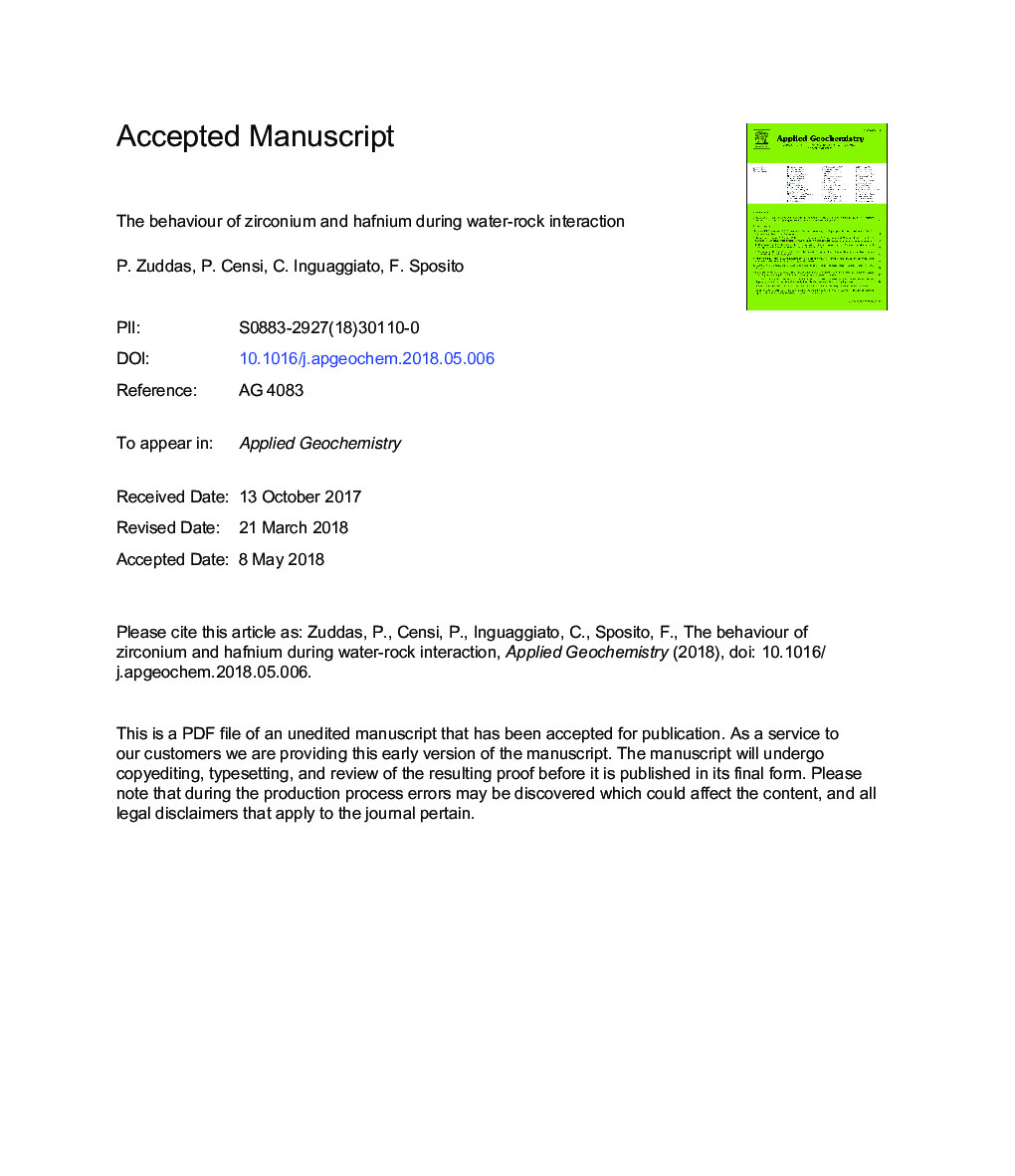| Article ID | Journal | Published Year | Pages | File Type |
|---|---|---|---|---|
| 8863092 | Applied Geochemistry | 2018 | 29 Pages |
Abstract
Zr and Hf are two elements with same ionic charge and similar ionic size at a given coordination number. Despite the Zr/Hf ratio is quite constant in meteorites and lithospheric rocks, in natural waters can be either higher or lower compared to values of interacting minerals and rocks. Here, we reanalyze very recent published and present new data on continental and brine waters indicating that the Zr and Hf behavior is dependent on the properties of the authigenic phases formed during the water-rock interaction process. Our results show that water pH in the range between 1 and 9 and water ionic strength in the range between 0.001 and 4â¯molâ¯kgâ1 are responsible for the change of the Zr/Hf ratio. However, analyzing the colloidal fraction comprising Fe-oxyhydroxides, carbonate and clay minerals (occasionally gypsum and halite), obtained by ultrafiltration at the dimension between 10â¯kDa and 0.45â¯Î¼m diameter pore, we found that the Zr/Hf molar ratio is very low and variable between 5 and 35. We propose that the dissolved Zr/Hf ratio is dependent on the morphological and electrical properties of authigenic mineral surfaces and emphasize the lack of a quantitative evaluation of the ion speciation of Zr and Hf in natural waters and brines limiting the transport prediction of Zr and Hf during the complex water-rock interaction process.
Related Topics
Physical Sciences and Engineering
Earth and Planetary Sciences
Geochemistry and Petrology
Authors
P. Zuddas, P. Censi, C. Inguaggiato, F. Sposito,
